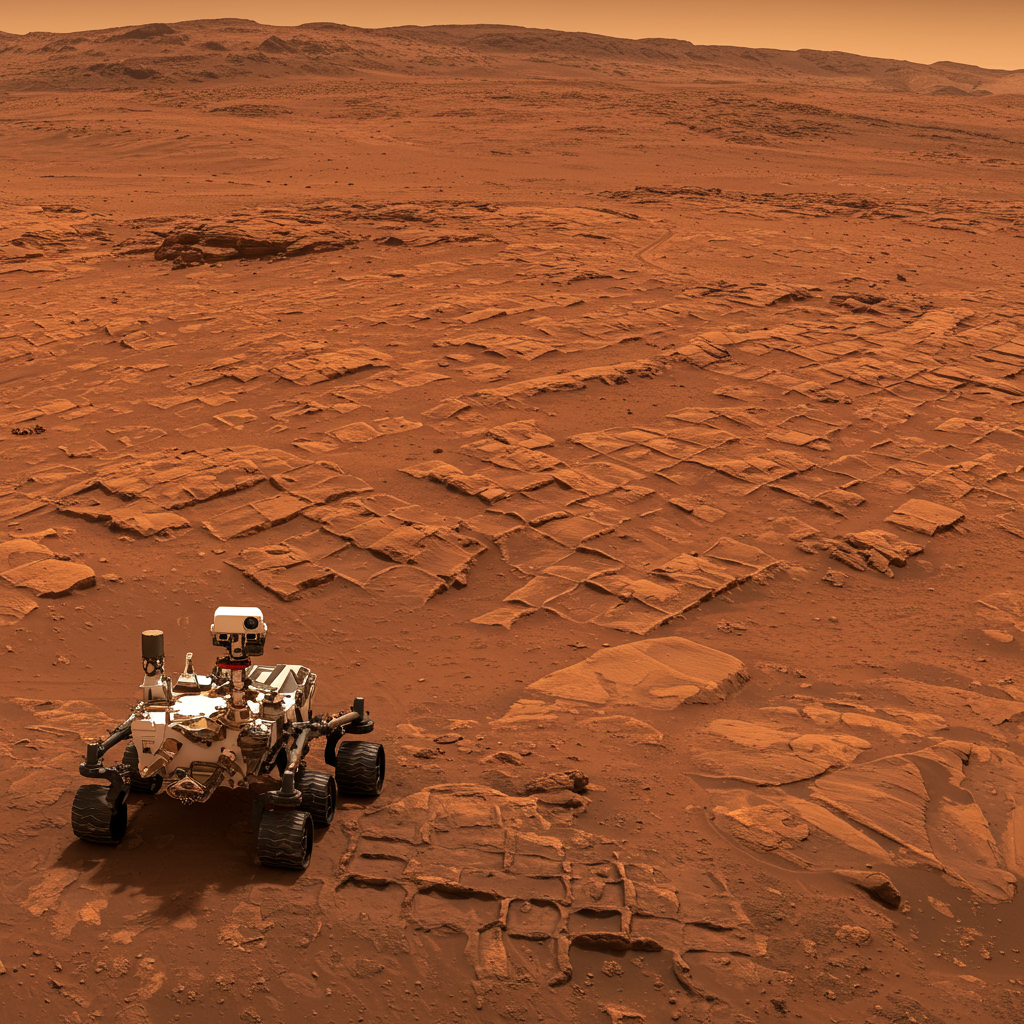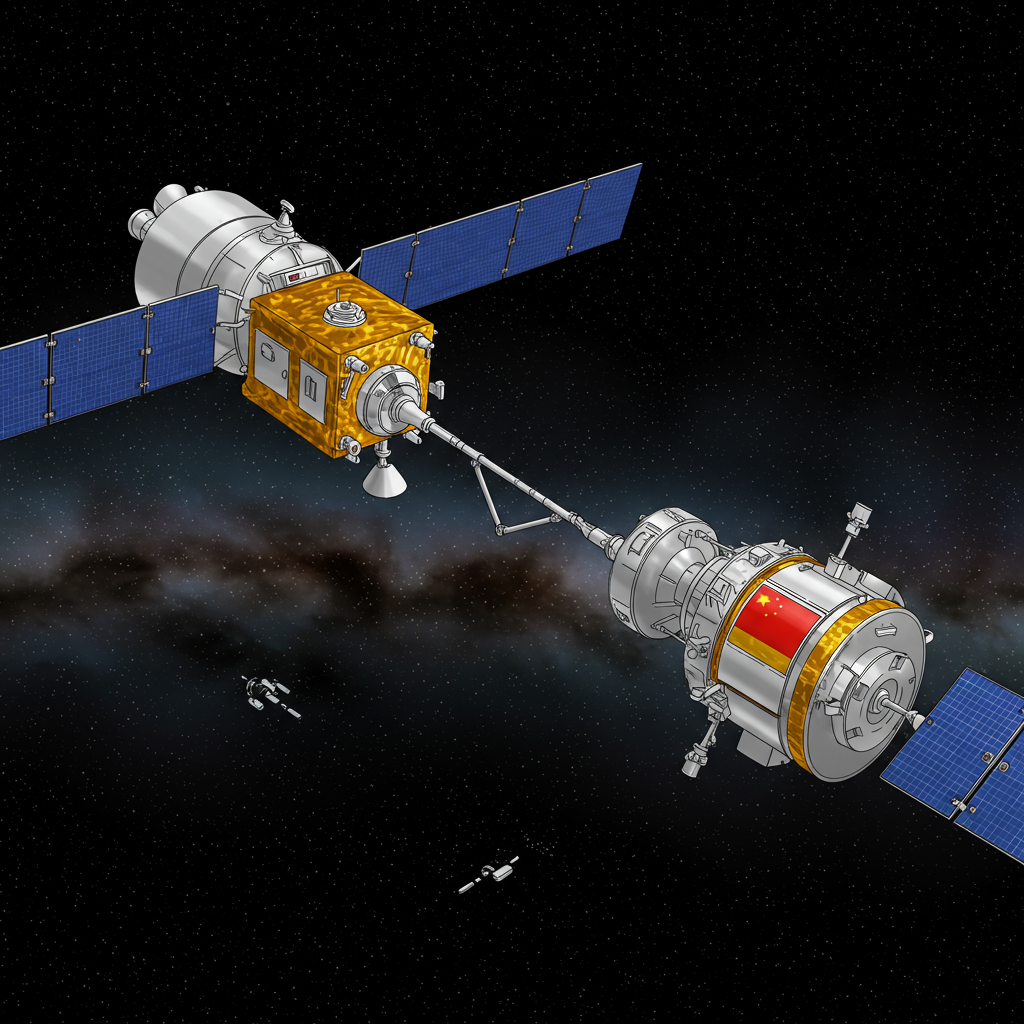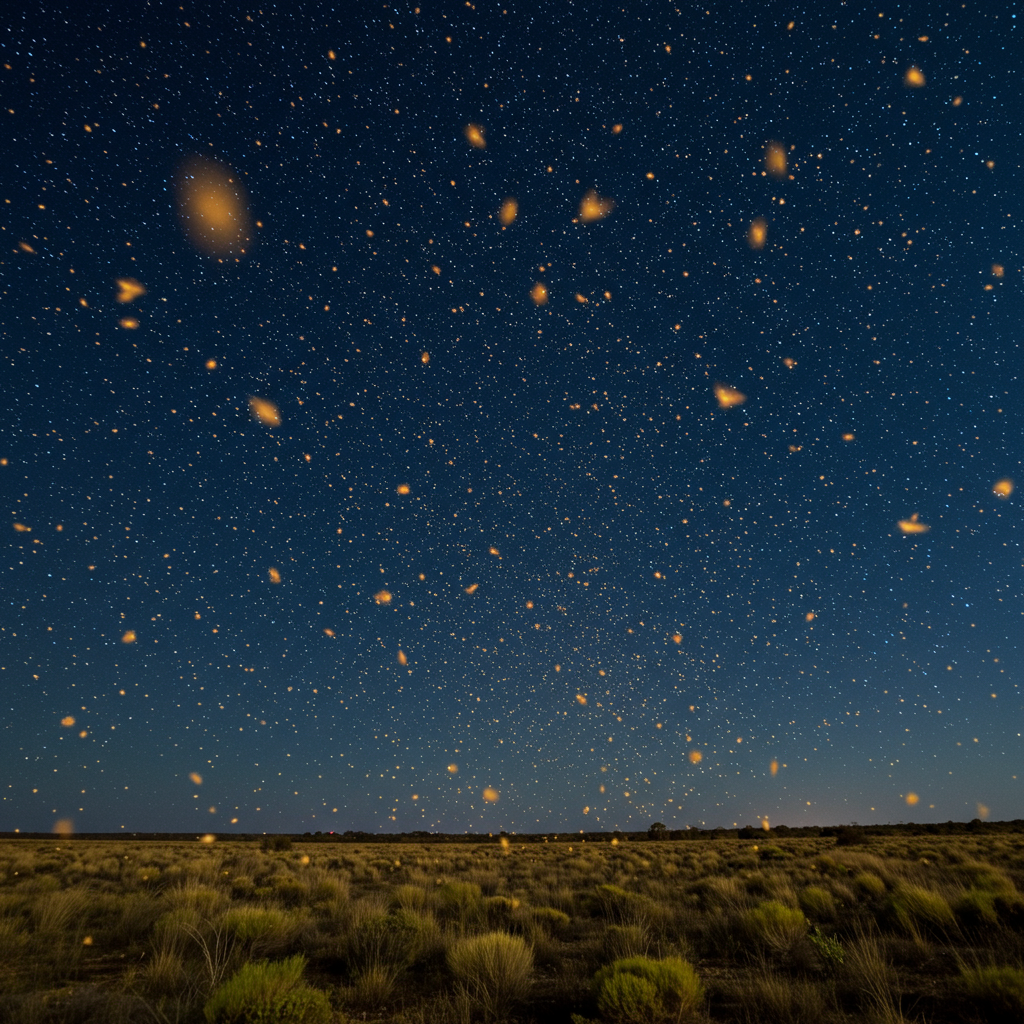NASA’s Curiosity Mars rover has captured its first stunning 360-degree panoramic view of a unique Martian landscape section marked by geological formations known as “boxwork patterns.” This detailed vista offers scientists and the public an immersive look at these fascinating features up close.
The panorama was meticulously stitched together from 291 individual images taken by Curiosity’s Mast Camera (Mastcam) between May 15 and May 18, 2025, covering Martian days (sols) 4451 through 4454 of the mission. To provide a relatable perspective, the color in these images has been adjusted to approximate how the scene would appear under Earth’s lighting conditions, as seen by the human eye.
What Are Martian Boxwork Patterns?
From orbit, these boxwork patterns present a striking appearance, resembling intricate spiderwebs crisscrossing the terrain. They are characterized by hardened, low ridges forming interconnected networks. These formations have intrigued planetary scientists since long before Curiosity’s arrival on the Red Planet in 2012.
Scientists hypothesize that these distinct patterns formed billions of years ago through the action of groundwater. The theory suggests that water, carrying dissolved minerals, trickled through existing cracks and fractures within the rock. As the water evaporated, the minerals were left behind, gradually hardening within these fissures much like cement. Over eons, relentless wind erosion acted like a natural sandblaster, wearing away the softer surrounding rock and leaving behind the more resistant, mineral-cemented ridges that we see today as the prominent boxwork networks.
Exploring the Panoramic Scene
The expansive 360-degree panorama provides valuable context to Curiosity’s surroundings. In the foreground, the rover’s own tracks are clearly visible, marking its path across the Martian surface.
Looking into the distance towards the right, a distinctive butte nicknamed “Texoli” stands out against the horizon. Farther still, dominating the view at the top center of the image, is the distant rim of Gale Crater itself – the ancient impact basin Curiosity has called home since landing.
Curiosity has been diligently exploring the foothills of Mount Sharp, a towering 3-mile-tall (5-kilometer-tall) mountain located within Gale Crater, since 2014. This panoramic view is another significant milestone in the rover’s ongoing investigation into Mars’ geological history and its past habitability.
About the Curiosity Mission
The Curiosity Mars rover was expertly built by NASA’s Jet Propulsion Laboratory (JPL), which is managed by Caltech in Pasadena, California. JPL leads the Curiosity mission on behalf of NASA’s Science Mission Directorate in Washington, as part of NASA’s comprehensive Mars Exploration Program portfolio. The rover’s crucial Mastcam instrument, used to capture the images for this panorama, was built and is operated by Malin Space Science Systems in San Diego.




